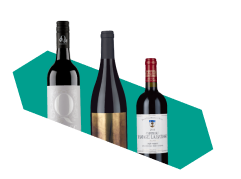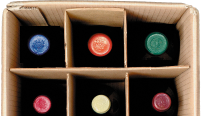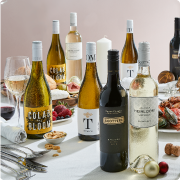Matching the wrong wine with your carefully prepared dish can leave a bad taste in your mouth, so it’s worth gaining some knowledge about classic food and wine pairings. It may seem like a dark art, but it’s a skill anyone can learn.
How to pair food and wine
It can be tricky working out what wine goes with what dish. Ingredients, cooking methods and the wine’s style and flavour all affect the taste combo. But once familiar with the basic principles, you’ll pair food and wine confidently.
Here are a few simple guidelines to help get you started:
Keep food and wine at a similar ‘weight’ – Balance is key to a successful food and wine pairing. Try to match your wine’s heaviness or ‘body’ to your dish to avoid it overpowering your food or vice versa. Light dishes (typically lower in fat) suit light-bodied wines, while richer dishes often benefit from something more full-bodied in your glass.
Match flavour intensity and character – Matching like with like is always a safe starting point. Match savoury with savoury, sweet with sweet, and look for similar flavours. For instance, a grilled fish with a lime marinade would go well with a glass of Sauvignon Blanc, which has similar citrus notes. Also, the stronger the flavours in your dish, the stronger the flavours of your wine should be. If you’re eating spicy food, such as Indian or Sichuan cuisine, choose a bold aromatic wine such as Gewürztraminer or Riesling.
Think about acidity – Acidity is your friend when it comes to food pairings. Pick a more acidic wine than the dish you’re serving. High-acidity wines, such as a Riesling, help cleanse the palate when eating slightly fatty, oily foods.
Try a sweet/salty match – A sweet wine can be a great contrast to salty foods, balancing the dish. It also acts as a foil to rich foods – think Sauternes and pâté, for example. Sweeter wines can help balance the saltiness in cheeses, as in the classic Port and blue cheese pairing.
Watch the alcohol levels – High-alcohol wines work with hearty dishes such as stew or steak but they are best avoided if serving spicy dishes. Spice combined with a high-alcohol wine like a Shiraz will set your mouth on fire, and not in a good way. Off-dry or low- to medium-alcohol wines are best with a spicy ramen or Thai green curry, just to take the edge off the heat.
Consider your cooking methods – How your food is cooked can significantly impact the flavour and texture of your dish, as well as the perfect wine pairing. Grilling or smoking can add a smoky quality to meat and fish. In contrast, poaching or steaming can highlight the natural flavours of your food. Match smoky or earthy wines with grilled or smoked foods, and crisper, cleaner wines with lightly cooked dishes.
Pair with the sauce – Making a sauce-heavy dish? The flavours in your sauce can often dominate the entire dish, so find a wine that complements them. With its apple and citrus flavours, a Chardonnay works well with creamy sauces, while a Shiraz or a Cabernet Sauvignon can pair well with tomato-based or peppercorn sauces.
Try contrasting pairings – Matching wine and food flavours is a good idea, but conversely, opposites can also work well. Sweet wines such as an off-dry Gewürztraminer or an off-dry rosé can add exciting complexity to savoury or spicy Mexican or Asian dishes. They can also help refresh your palate between bites.
When in doubt – “What grows together, goes together” is a common saying in the wine world, and it’s a handy tip for food and wine pairings. Think of a French Burgundy with a bowl of beef bourguignon or a glass of Sauvignon Blanc with a goat’s cheese salad.
Classic food and wine pairings
Looking for a starting place for how pairing food and wine works? Try one of these tried and true combos.
Cabernet Sauvignon and steak
Cabernet Sauvignon works well with any type of beef steak, although it’s particularly delicious with fattier cuts such as sirloin or ribeye. Its high tannins bind to the fat, softening the wine while cleansing your palate. A Malbec or Merlot are good stand-ins.

Sangiovese and pizza
Whether it’s a convenient midweek meal or a weekend treat, pizza’s versatility and range of toppings mean you have plenty of wines to choose from as a partner. Sangiovese is a classic choice – its fruitiness matches the natural sweetness of tomato bases and the richness of the melted cheese. If you’ve opted for a pepperoni pizza, a glass of Chianti is a good choice. Read our guide to the best wines to enjoy with pizza to discover more.
Sparkling wine and fish and chips
Sparkling wine and battered fish! It may sound out there, but this combo is a joyous marriage of flavour and texture. The acidity and bubbles in a sparkling wine cut through the fat in the fish and chips. And if you’ve squeezed lemon juice on your fish or sploshed some vinegar on your chips, the acidity from those will also complement the fizz perfectly. Whether you’re keeping it easy with an Aussie sparkler or splurging on a bottle of Champagne, this pairing is a hit in more ways than one.
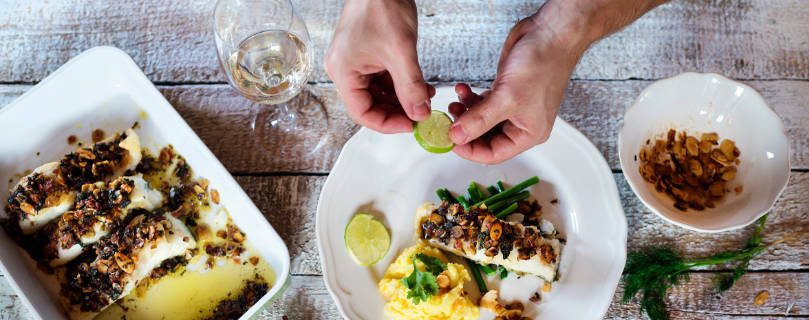
Shiraz and barbecue
Shiraz is a good all-rounder to serve at a barbecue, whether serving up a rack of glazed pork ribs, burgers or barbecued sausages. The wine’s high alcohol content, naturally smoky undertone and rich fruit notes perfectly complement the meat’s tangy sweetness and the depth of a concentrated barbecue glaze.
Pinot Noir and mushrooms
Pinot Noir is a popular red wine thanks to its silky tannins, easy-drinking medium body and savoury notes of truffle and mushroom. Unsurprisingly, it pairs deliciously with a mushroom pie, stuffed mushrooms or truffle macaroni cheese.
Oaked Chardonnay and roast chicken
Roasting a chicken on the weekend? This classic dish is best paired with a rich and buttery white wine. A toasty, oak-aged Chardonnay is a popular choice for your roast, with juicy stone fruit notes and enough acidity to cut through the chicken’s fattiness.
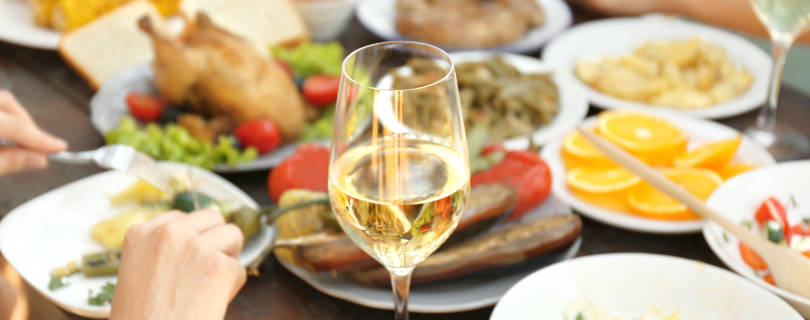
Champagne and oysters
One of the most luxurious food and wine pairings in the world. Champagne and oysters work well together thanks to the crisp, clean minerality of wine, which complements the natural salinity of the shellfish. If serving cooked oysters, try a glass of rosé Champagne with aromatic red berry hints.


